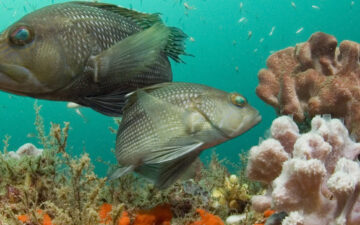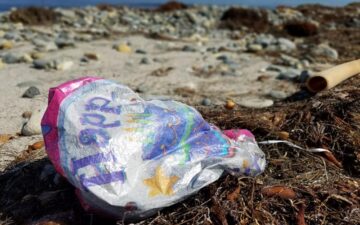by Catharine Cooper
INSERT STINGRAY IMAGE HERE
In an unprecedented move, Mexican President Felipe Calderón withdrew the development permit for the 9,400 acre development of Cabo Cortez on the southern tip of Baja California. The land, adjacent to Cabo Pulmo National Marine Reserve, had become a regional – if not national cause – among ocean conservationists and environmentalists because of its proximity to the only intact coral reef in the Sea of Cortez.
The reef itself is estimated to be 20,000 years old and is home to 226 of the 875 species that exist in the region. Cabo Pulmo National Marine Park was created in 1995 and encompasses 17,750 marine acres. Parts of the shallow coral mountain lie just 10 miles offshore. In addition to sea turtles, dolphin, tiger and bull sharks, migrating blue and humpback whales, and rare whale sharks congregate in the area. (For a stunning collection of Cabo Pulmo photographs, see National Geographic’s Pictures: Best Marine Park? Booming Fish Leap and Swarm)Decades of overfishing and the commercial practice of dragging anchors and nets had left the reef nearly devoid of life. In the early 90s, local fishermen recognized the need for protection, and rallied for the reserve. Four years after its establishment, monitors from Autonomous University of Baja California Sur (UABCS) and Scripps were astonished at the changes in the sea life. Enforcement of the no fishing/no take zone had given rise to Gulf groupers larger than anywhere else in the Gulf, dense schools of predatory jacks, increased numbers of black top reef sharks, and other predators.
In 2005, Cabo Pulmo was designated a UNESCO World Heritage Site, and in 2008 it was added to the Ramsar List of Wetlands of International Importance. A great deal of credit goes to the local population, who made a dramatic shift from fishing to eco-tourism, and put their muscle to enforcing the marine protections. A study released by Scripps Institute of Oceanography reported that in August 2011, Cabo Pulmo’s biomass – the total weight of living species – had increased by 463 percent from 1999 to 2009. “No other marine reserve in the world has shown such a fish recovery,” wrote researcher, Octavio Aburto-Oropeza.
Such great results made the Mexican government’s permit of the upscale/uber-development Cabo Cortez all the more mind-boggling. For a local population to have worked so hard to bring life back to the sea, and to be sanctioned and honored by numerous world-wide organizations, it seemed impossible to believe that a permit for 9,380 acres with seven hotels, 27,000 guestrooms, two golf courses, a marina for 490 boats, and 5,000 residents for workers could even be considered.
Groups such as U.S. NGO Wildcoast, the Mexican NGO Niparajá, Pro Natura Northwest, Community & Diversity, Friends of Cabo Pulmo, Scripps Institute of Oceanography, the World Wildlife Fund, Greenpeace, and UABCS joined together to protest Cabo Cortez. Their efforts proved that grassroots campaigns could be effective.
An onslaught of media outlets – websites, newspapers, radio spots, and prime time television segments – garnered attention. A photo exhibition was staged in the Federal Senate and Legislative Palace in Mexico City to highlight the importance of the Reef, and led to motions against the proposed project. Pressure was placed on Mexico’s environmental protection agency to revoke the development permit.
In his announcement on Friday the 15th of June 2012, Calderón restated environmentalist concerns. “Because of its size,” he said, “we have to be absolutely certain that it wouldn’t cause irreversible damage, and that absolute certainty has not been proved.”
Omar Vidal, the head of WWF Mexico, called the announcement, “an important victory, because it shows that when the public organizes, it can achieve great things.”
For the moment, we who care most deeply have spoken for the sea, and we have been heard. The fragile resuscitated reef is safe – temporarily. The chemical run-offs, garbage and waste water, which would have resulted form the enormity of development – and killed off reef life once again – has been halted. However, the owners of the land, a Spanish development group, Hansa Baja Investments, stated in a press conference, that they would re-apply, and would take counsel from qualified advisors. Their new plan will be, “… compatible with the conservation and preservation of the area’s environment.”
Residents of the area would prefer no development at all. With their shift from fishing to scuba tours, kayaking trips and other eco-based activities, the community is working to develop their own model for sustainable tourism in southern Baja. Integral to the program is to maintain the rustic environmentally friendly atmosphere of the community, and to expand that vision to other towns in the region.
In other words, there is no need for another Cabo or Cancún. We need more places that are safe to swim, to snorkel, and be in the sea. We need seas that are healthy, free of pollutants and teaming with life. Our underwater friends and partners depend on us to make that happen. So join hands with The Ocean Foundation, and put your heart and spirit into protecting the seas.
Writer, photographer, and designer, Catharine Cooper learned to swim before she could walk. An avid surfer and diver, the sea is where she feels most at home. She splits her time between Loreto, BCS and southern California. You can follow her Baja adventures at http://www.bajadreaming.me







